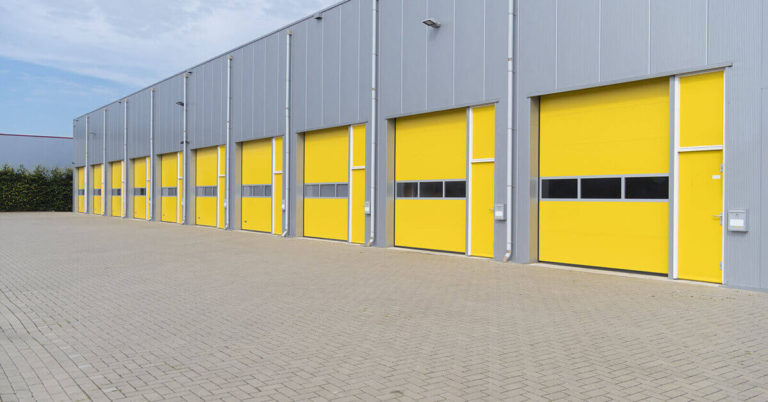The Complete Guide To Warehouse Storage Rental: Maximizing Efficiency And Minimizing Costs

1. Understanding Warehouse Storage Rental Options
When it comes to managing inventory, one of the most critical decisions for businesses is finding the right storage solution. Renting warehouse storage space offers several advantages that can help businesses maximize efficiency and minimize costs.
The Advantages of Renting Warehouse Storage Space
There are several advantages to renting warehouse storage space instead of investing in a dedicated facility. Firstly, renting allows businesses to scale their storage needs according to current demands. Whether a business experiences seasonal fluctuations or rapid growth, renting provides the flexibility to adapt quickly.
In addition to flexibility, renting warehouse storage space also allows businesses to avoid the initial investment and ongoing maintenance costs associated with owning a facility. By renting, businesses can allocate their capital towards other core aspects of their operations.
Renting warehouse storage space also provides access to professional management services. This includes security, maintenance, and facility management, which can be challenging and time-consuming for businesses to handle on their own.
Choosing the Right Warehouse Storage Rental Provider
Choosing the right warehouse storage rental provider is crucial for a smooth and efficient storage operation. Consider the following factors when selecting a provider:
- Location: Choose a warehouse that is conveniently located near your suppliers and customers to minimize transportation costs and improve overall logistics efficiency.
- Facility Features: Evaluate the facility’s features such as loading docks, ceiling height, shelving options, and temperature control to ensure they align with your specific storage requirements.
- Security Measures: Look for warehouses with robust security measures in place, including access controls, surveillance systems, and fire protection systems.
- Reputation and Experience: Research the reputation and experience of the warehouse storage rental provider. Look for customer reviews and ask for references to ensure they have a track record of providing excellent service.
An Overview of Different Types of Warehouse Storage Facilities
There are various types of warehouse storage facilities available, each catering to different storage needs. Understanding these options can help businesses choose the most suitable solution:
- General Warehouses: These warehouses offer basic storage space for a wide range of goods. They are suitable for businesses with diverse inventory requirements.
- Cold Storage Facilities: Cold storage facilities provide temperature-controlled environments, making them ideal for storing perishable items such as food, pharmaceuticals, or flowers.
- Fulfillment Centers: Fulfillment centers are specialized warehouses that handle order fulfillment for e-commerce businesses. They provide services such as picking, packing, and shipping, helping businesses streamline their operations.
- Bonded Warehouses: Bonded warehouses are facilities authorized by customs authorities for storing imported goods. They allow businesses to defer import duties and taxes until the goods are sold or withdrawn for consumption.
- Distribution Centers: Distribution centers function as hubs for storing and distributing goods to multiple locations. They are designed to facilitate efficient order fulfillment and reduce transportation costs.
2. Maximizing Efficiency in Warehouse Storage
Optimizing Layout and Design for Maximum Space Utilization
The layout and design of a warehouse play a crucial role in maximizing storage space utilization. Consider the following strategies:
- Vertical Storage: Utilize vertical space by installing high shelving systems or using mezzanine floors. This allows for efficient utilization of available space without expanding the warehouse footprint.
- Efficient Picking Paths: Streamline picking operations by organizing products in a logical sequence. This reduces travel time and minimizes congestion in the warehouse.
- Racking Systems: Implement a racking system that matches the type of products being stored. Different types of racking systems, such as selective racks, drive-in racks, or flow racks, offer varying levels of accessibility and storage density.
Implementing Effective Inventory Management Systems
Effective inventory management is crucial for optimizing warehouse storage. Implement the following strategies for efficient inventory management:
- ABC Analysis: Classify products based on their value and prioritize storage space accordingly. High-value items should be easily accessible, while low-value items can be stored in less accessible areas.
- Implement Inventory Tracking Systems: Use inventory management software that allows real-time tracking of stock levels, reorder points, and order statuses. This enables businesses to maintain optimal inventory levels and avoid stockouts.
- Regular Cycle Counts: Conduct regular cycle counts to ensure inventory accuracy. This helps identify and rectify discrepancies, reducing the risk of stock variances and improving overall operational efficiency.
Utilizing Technology and Automation for Streamlined Operations
Technology and automation can greatly enhance efficiency in warehouse storage. Consider the following technologies:
- Warehouse Management Systems (WMS): Implement a WMS that integrates with inventory management software and automates warehouse processes. This streamlines tasks such as order fulfillment, inventory tracking, and labor management.
- Automated Material Handling Systems: Use automation technology such as conveyor belts, automated guided vehicles (AGVs), or robotic systems to expedite material movement within the warehouse. This reduces labor costs and improves overall efficiency.
- RFID and Barcode Systems: Implement RFID or barcode systems to track and identify inventory items accurately. This enables faster and more accurate picking, reducing errors and improving order fulfillment speed.
3. Minimizing Costs in Warehouse Storage Rental
Comparing Rental Rates and Negotiating Lease Terms
When renting warehouse storage space, it’s essential to compare rental rates and negotiate lease terms to minimize costs. Consider the following strategies:
- Research Market Rental Rates: Research current market rental rates for warehouse storage in your area. This will provide you with a benchmark for negotiations and allow you to identify potential cost-saving opportunities.
- Long-Term Lease Agreements: Consider signing long-term lease agreements to secure preferential rental rates. Landlords often offer discounts or incentives for tenants who commit to extended lease terms.
- Flexibility in Lease Terms: Negotiate flexible lease terms that align with your business needs. This includes options for expansion or downsizing, allowing you to adjust your storage space as your business requirements change.
Reducing Labor Costs through Efficient Staffing and Training
Labor costs can significantly impact warehouse storage expenses. Implement the following strategies to reduce labor costs:
- Cross-Training Employees: Cross-train warehouse staff to perform multiple tasks. This enhances flexibility and enables efficient utilization of labor resources.
- Performance Management: Implement performance management systems to incentivize productivity and ensure efficient use of labor. Set performance targets and provide regular feedback and training to help employees meet their goals.
- Labor-saving Equipment and Technology: Invest in labor-saving equipment and technology, such as forklifts, pallet jacks, or voice picking systems. This allows employees to perform tasks more efficiently and reduces the overall labor requirement.
Implementing Energy-Saving Measures to Lower Utility Costs
Reducing utility costs can help minimize overall warehouse storage expenses. Consider the following energy-saving measures:
- Lighting Upgrades: Replace traditional lighting with energy-efficient LED lighting systems. LED lights consume less electricity and have a longer lifespan, resulting in significant energy and cost savings.
- Insulation and Weatherproofing: Insulate the warehouse walls, roof, and doors to minimize heat transfer and reduce the need for heating or cooling. Weatherproofing measures, such as sealing gaps and cracks, also contribute to energy savings.
- Demand-based HVAC Systems: Install a demand-based HVAC system that adjusts heating or cooling based on real-time occupancy and temperature conditions. This ensures optimal energy consumption without compromising comfort or safety.
4. Ensuring Safety and Security in Warehouse Storage
Maintaining Proper Fire Safety and Emergency Preparedness Protocols
Fire safety and emergency preparedness are paramount in warehouse storage. Implement the following protocols to ensure safety:
- Fire Suppression Systems: Install automatic fire suppression systems, such as sprinklers or foam-based systems, to quickly control fire outbreaks and minimize damage.
- Regular Inspections and Maintenance: Conduct regular inspections of fire safety equipment, including fire extinguishers and fire alarms. Ensure maintenance is carried out as per manufacturers’ recommendations.
- Emergency Evacuation Plans: Develop and communicate comprehensive emergency evacuation plans to all employees. Conduct regular drills to ensure everyone is familiar with evacuation procedures.
Implementing Robust Security Measures to Protect Assets
Security measures are vital to protect assets stored in warehouses. Consider the following security measures:
- Access Controls: Implement access controls, such as secure entry points and ID card systems, to restrict unauthorized access to the warehouse.
- Surveillance Systems: Install a comprehensive surveillance system, including CCTV cameras, to monitor the warehouse premises. Ensure cameras cover all critical areas, such as entrances, exits, and high-value storage areas.
- Security Personnel: Employ trained security personnel to patrol the premises and monitor security systems. They can respond promptly to any security breaches or suspicious activities.
Complying with Legal and Regulatory Requirements for Warehouse Operations
Compliance with legal and regulatory requirements is essential for the smooth operation of warehouse storage. Consider the following compliance measures:
- Occupational Health and Safety (OHS): Ensure compliance with OHS regulations, including providing a safe working environment, conducting risk assessments, and training employees on safe work practices.
- Environmental Regulations: Comply with environmental regulations, including waste management and hazardous material storage and disposal.
- Customs and Trade Compliance: If operating a bonded warehouse or dealing with international trade, ensure compliance with customs and trade regulations to avoid penalties and delays.
By understanding warehouse storage rental options, maximizing efficiency, minimizing costs, and ensuring safety and security, businesses can effectively manage their inventory while optimizing operations and profitability.
FAQ
Question: What are the advantages of renting warehouse storage space? – Renting warehouse storage space offers flexibility to scale according to demand and helps avoid initial investment and maintenance costs. It also provides access to professional management services.
Question: How do I choose the right warehouse storage rental provider? – When choosing a warehouse storage rental provider, consider factors such as location, facility features, security measures, and reputation. It’s important to research the provider’s reputation and experience, and ask for references.
Question: What are the different types of warehouse storage facilities? – There are various types of warehouse storage facilities, including general warehouses, cold storage facilities, fulfillment centers, bonded warehouses, and distribution centers. Each caters to different storage needs.
Question: How can I optimize layout and design for maximum space utilization? – To maximize space utilization, consider strategies such as utilizing vertical storage, streamlining picking paths, and implementing racking systems that match the type of products being stored.
Question: What are some strategies for effective inventory management in warehouse storage? – Implementing strategies such as ABC analysis, inventory tracking systems, and regular cycle counts can help optimize inventory management in warehouse storage.
Question: How can I utilize technology and automation for streamlined operations in warehouse storage? – Implementing warehouse management systems, automated material handling systems, and RFID or barcode systems can enhance efficiency and streamline operations in warehouse storage.
Question: How can I minimize costs in warehouse storage rental? – To minimize costs in warehouse storage rental, it’s important to compare rental rates, negotiate lease terms, reduce labor costs through efficient staffing and training, and implement energy-saving measures.
Question: What safety and security measures should be implemented in warehouse storage? – Safety and security measures in warehouse storage include maintaining fire safety and emergency preparedness protocols, implementing robust security measures such as access controls and surveillance systems, and complying with legal and regulatory requirements.
Useful Resources:
- Logistics Management
- Material Handling Industry
- Supply Chain Brain
- Inbound Logistics
- Warehousing Education and Research Council (WERC)
- Retail Industry Leaders Association (RILA)
- American Logistics Aid Network (ALAN)
- Warehouse Optimization





